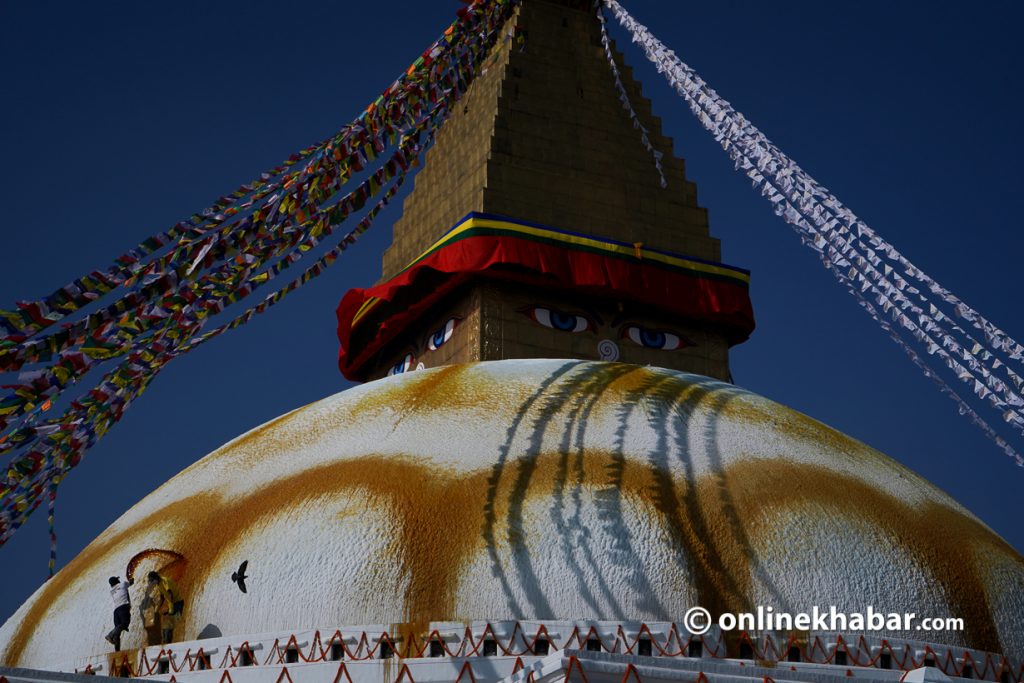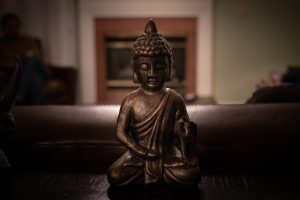Modernity has multiplied the comforts of today’s generation in comparison to their older generation. Things that were a big dream to them are now just too obvious for the new. Modern consumerism has developed in such a way that innovation has bombarded us with greater facilities and values. This has certainly enhanced materialistic comforts, yet people are unhappy despite having everything that is just a click away.
The increased amount of stress, worry, anxiety, dissatisfaction, health issues and overall dissatisfaction with life shows the saga of a human’s pursuit of happiness even today. This article attempts to analyse the reality of human sufferings, their behaviours and consciousness and the significance of Vipassana and Buddha’s teachings in today’s context.
The first noble truth: Dukkha
Before talking about Vipassana, let’s talk about the four noble truth comprises the essence of Buddha’s teachings.
They are the truth of suffering—Dukkha, the truth of the cause of suffering—Samudaya, the truth of the end of the suffering— Nirodha and the truth of the path that leads to the end of suffering—Magga. Suffering exists and it has a cause and an end. The concept of suffering is not intended to convey a negative worldview but rather a pragmatic perspective that deals with the world as it is and attempts to rectify it.
Can we skip old age, sickness and death? Certainly not. These are too obvious states of human existence, but the problem of suffering goes much deeper. Even when we are not suffering from outward causes like illness or bereavement, we suffer because we always do not meet our expectations. We are subject to desires and cravings, but even if we are able to satisfy these aspects of life, the satisfaction is only temporary. Due to its impermanent nature, it perishes eventually and internally we become unfulfilled and unsatisfied.
The second noble truth: Samudaya
It seems our daily problems are easily recognisable, whether it be thirst, pain from injury, or sadness from the loss of a loved one. Buddha taught desire is the cause of all suffering which indeed is more deeply rooted in our immediate worries. Further, Buddha classified the roots of suffering into three categories: greed and desire, ignorance or delusion and finally hatred and destructive urges. All our senses have an attachment to positive, negative and neutral sensations and thoughts, which are the causes of suffering.
The third noble truth: Nirodha
One cannot eliminate suffering without releasing attachments because attachment is the cause of suffering. Buddha on The Fire Sermon has prescribed estrangement which means to know the senses of the self without becoming enchanted or misled by them.
The fourth noble truth: Magga
Through the eightfold path, Buddha prescribes the end of suffering. It is also called the middle path as it avoids indulgence and severe asceticism.
Eight divisions are described below:
● Right understanding (Sammā ditthi): Accept the teachings, however, not blindly. One must know and check whether any teaching is true or not. Buddha never made his followers believe his teachings blindly.
● Right intention (Sammā san̄kappa): Commit to cultivating the right attitudes.
● Right speech (Sammā vācā): Speak truthfully, and avoid gossip and abusive speech.
● Right action (Sammā kammanta): Behave peacefully and harmoniously; refrain from stealing, killing and overindulgence in sensual pleasure.
● Right livelihood (Sammā ājīva): Avoid making a living in ways that cause harm.
● Right effort (Sammā vāyāma): Cultivate positive states of mind.
● Right mindfulness (Sammā sati): Develop awareness of the body.
● Right concentration (Sammā samādhi): Develop the mental focus for their awareness.
Why think of sorrow?

One may argue life is beautiful, hence why we should be sceptical about the wonders of life by thinking of sorrow. The idea of four noble truths is often criticised because many people consider this a wrong interpretation of life. That is primarily true if just the first noble truth is considered. However, it is an incomplete and irrelevant conclusion without considering all the four as it is a holistic concept.
Our existence is based on our consciousness. We tend to focus on just five consciousnesses. However, according to Buddhist teachings, we have been governed by eight consciousnesses. The five consciousnesses are widely known as the five senses. Through the five sensory organs, we develop a perception of the external environment including objects, sound, smell, taste and touch.
But, only they cannot make us reactive to our situations. The sixth consciousness is cognition (mano), which enables various functions like interpretation and intellectualisation of perception. With this consciousness, we tend to react to situations. The seventh consciousness is ego-attachment (manas), which personalises and develops emotions based on the previous consciousnesses. The eighth consciousness is storing consciousness (alaya), which unknowingly stores our karmic energy and governs our entire life before and after death. Whatever our situations are, it is neither a boon nor a curse by god or nature; rather it is our own karmic energy which is anchored in our past and present karma.
Whatever we do in our daily life, whether it be eating, playing, watching movies or even sleeping, we continuously–knowingly or unknowingly–react to it. When the mind receives any input in the form of senses, it evokes sensation in the body and we react to the sensation. Our subconsciousness continuously produces a blind reaction, of which we are not even aware. Buddha prescribed a technique by which unintentional reactions can be overcome. This technique is known as the Vipassana meditation today.
Vipassana meditation

Vipassana meditation is an ancient technique of meditation, in which one transforms oneself through self-observation. It literally means “to see things as they really are.” The Vipassana approach facilitates self-awareness in individuals which enhances a sense of mind and body balance. Through continuous self-awareness of bodily sensation, meditators understand its true nature, which is impermanence. The increased self-awareness helps get out of blind reaction or automated reactive behaviour and develop appropriate adaptive responses which can be helpful in managing stressful situations successfully.
Through Vipassana, one can observe their consciousness and the reason why we react blindly. Everything arises from thoughts, by quieting the mind one can get out of compulsive thought patterns which are primarily cravings or aversion. The silent mind makes it more conscious and makes aware of the present moment in terms of what is happening now and helps to understand its true nature that is its constant change. This purification of the mind through Vipassana enables us to respond in a healthier manner. It not just purifies our mind but purifies our entire karmic energy.
With every single breath, in the Vipassana meditation, we are embracing the true nature of ourselves, which is change. But, we are so busy in our day to day lives that we even do not pay attention to introspecting ourselves. With every arising and passing away of bodily sensations, if impermanence is accepted through Vipassana, we can truly understand the happiness that lies within us.
As you practise Vipassana, pay attention to the quality of every thought that arises in your mind. Remember your thoughts become your words, your words become your actions, your actions become your habits, your habits become your character and your character determines your destiny. Buddha’s teachings are very profound, comprehensive and most importantly pragmatic. Do not limit yourself to the idea that Buddha was born in Nepal.
Happy Buddha Jayanti!
























